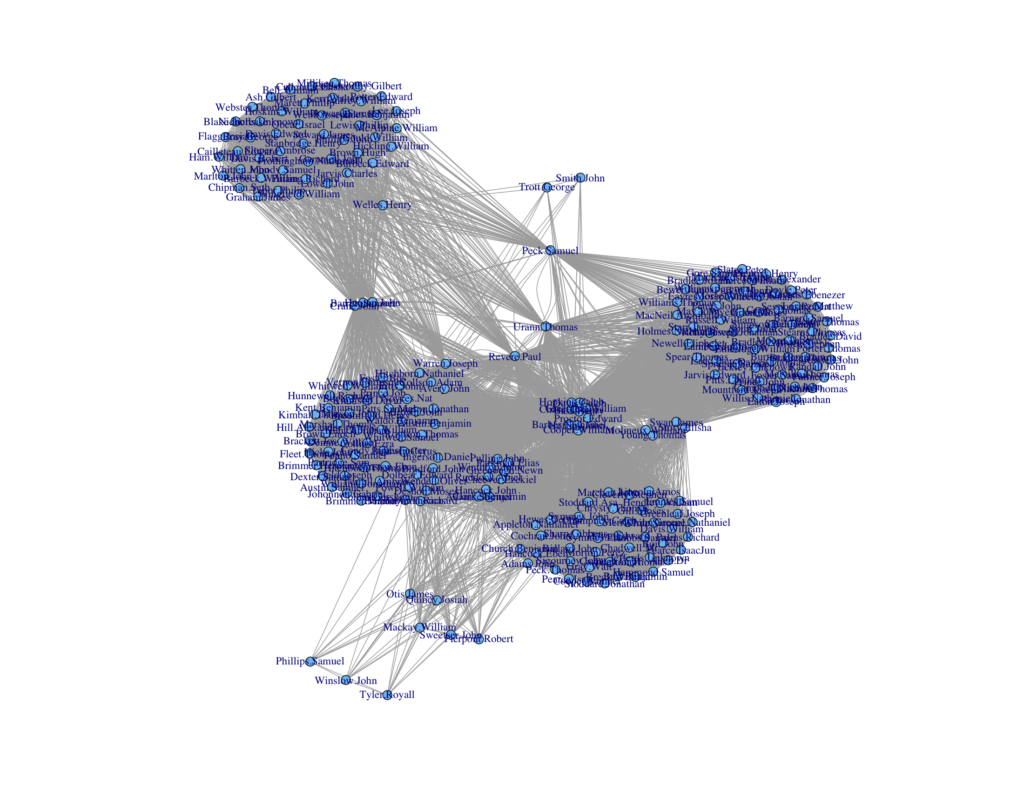I chose to explore the Using Metadata to Find Paul Revere network because I have always found Boston history (and the Revolutionary War) to be very cool since part of my family is from Boston.
The data used in this blog are stored in tables and characterize the relationship different seditious groups (groups plotting rebellion) have with each other and even the relationships between people in London 1772.
There are multiple analyses that can be done with Paul Revere using networks. The first is by assigning seditious groups as the nodes, while the edges displays whether groups share members. The width of the edges therefore convey the number of shared members. This can be seen below in Network 1.

The second network this blog looks at (seen below as Network 2) is the nodes representing people instead of seditious groups. The edges in this case represent whether those persons were connected via one of the groups. This is what creates the clusters of people, since they reside in similar groups.

This particular network provides a really important depiction of who Paul Revere was. In Network 2 he is directly in the middle of everyone. The blog thus points out that this characterizes Paul Revere as a very involved and well known individual that was involved in many groups plotting the revolution against England. These networks can show how important/involved people were within the sedition groups.
A critique of the project is that it allows little to no interactivity. It provides screenshots of the data and networks, but no easily accessible way to manipulate them. It does provide easily accessible data and the code necessary to create the graphs, but interaction is not provided directly in the blog. Even trying to get it working it R was not a trivial task. The blog also provides some entertaining dialogue, but loses my interest easily due to its number of words and lack of interactivity.
As for the reasoning behind the project, the author Kieran Healy states,
I have been asked by my superiors to give a brief demonstration of the surprising effectiveness of even the simplest techniques of the new-fangled Social Networke Analysis in the pursuit of those who would seek to undermine the liberty enjoyed by His Majesty’s subjects.
Using Metadata to find Paul Revere
June 9, 2013 – Kieran Healy
All in all, an interestingly structured blog post that provided some cool insight into Paul Revere.
1 thought on “Network Analysis – Paul Revere”
Comments are closed.

I think it is supper interesting that this project includes two different networks to help paint a more comprehensive view of Paul Revere’s position in history. I looked at the MoMA Inventing Abstraction network project and they have made their network have some interactivity that allows you to interact with the individual nodes of the network. I wonder if this project might benefit from using some of this updated interface development to make the research more interesting and accessible.